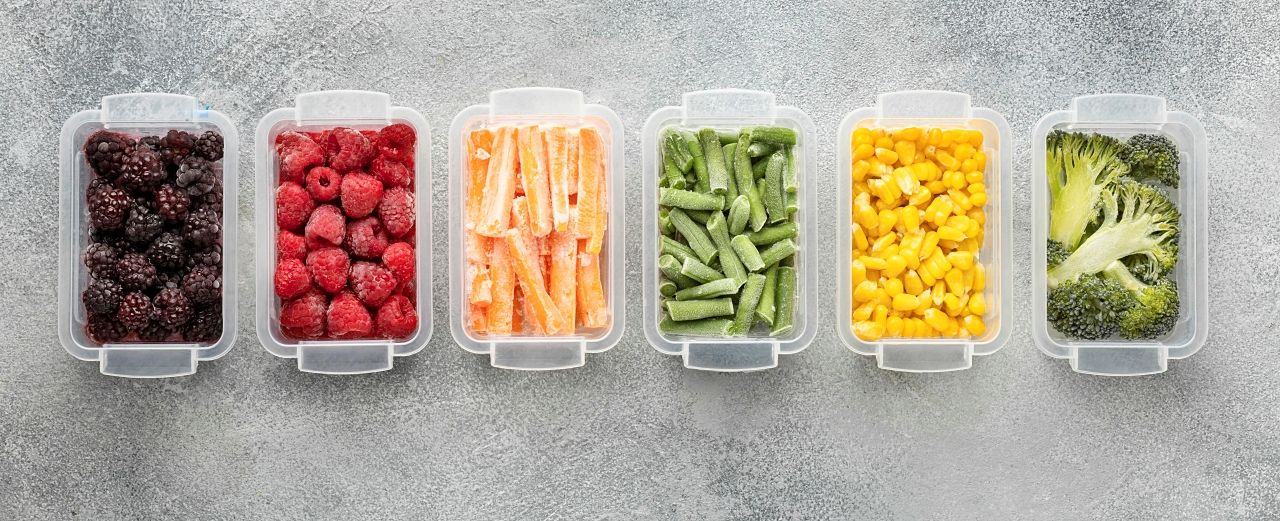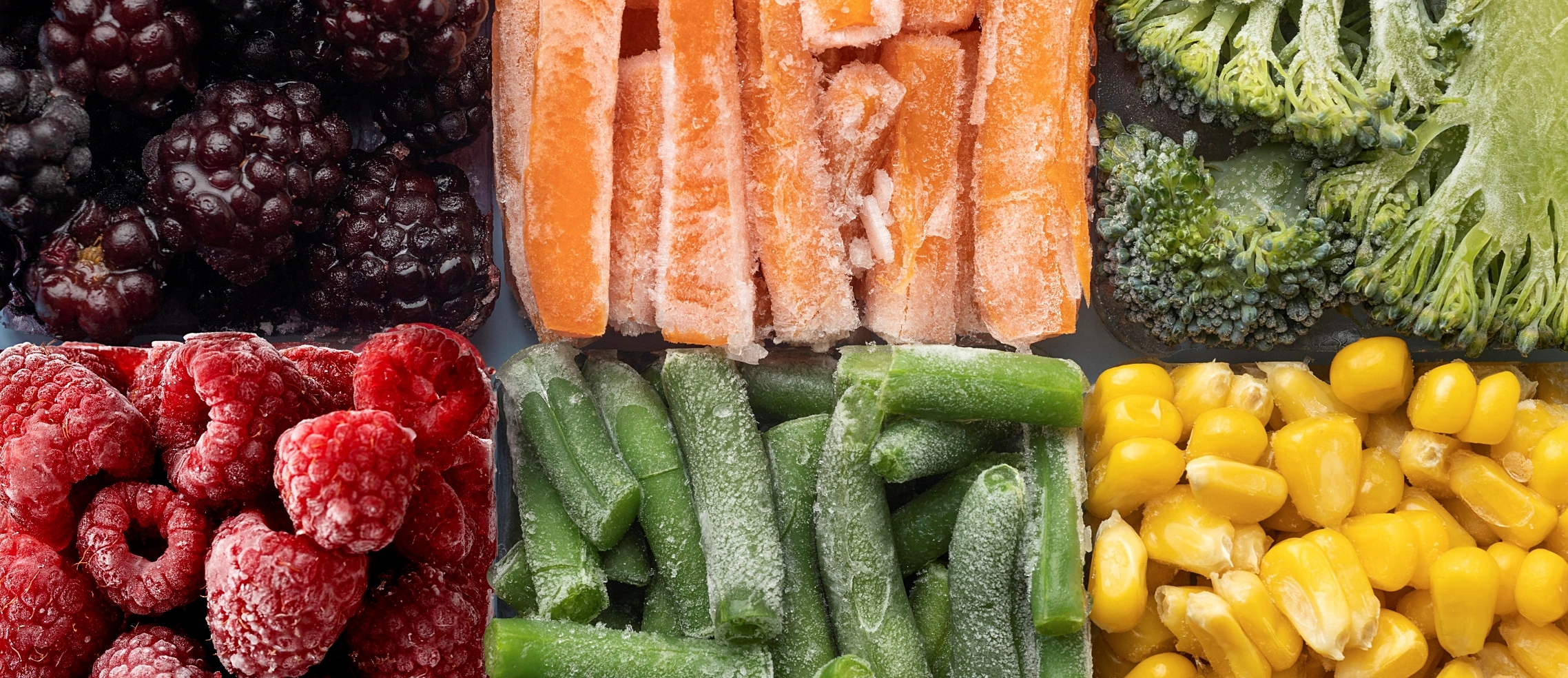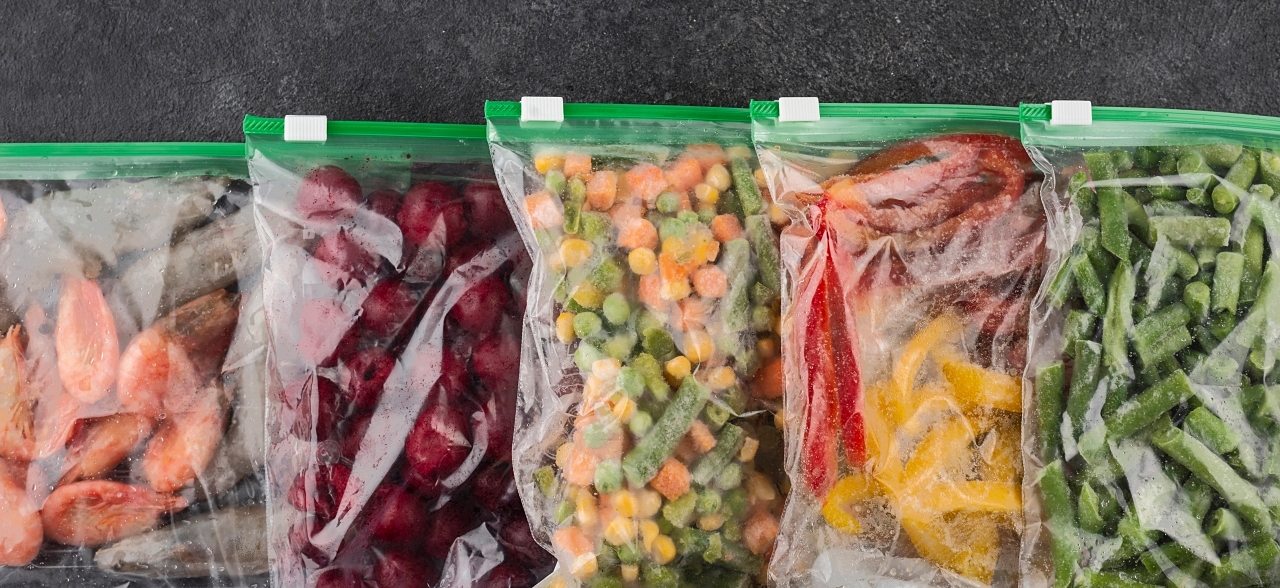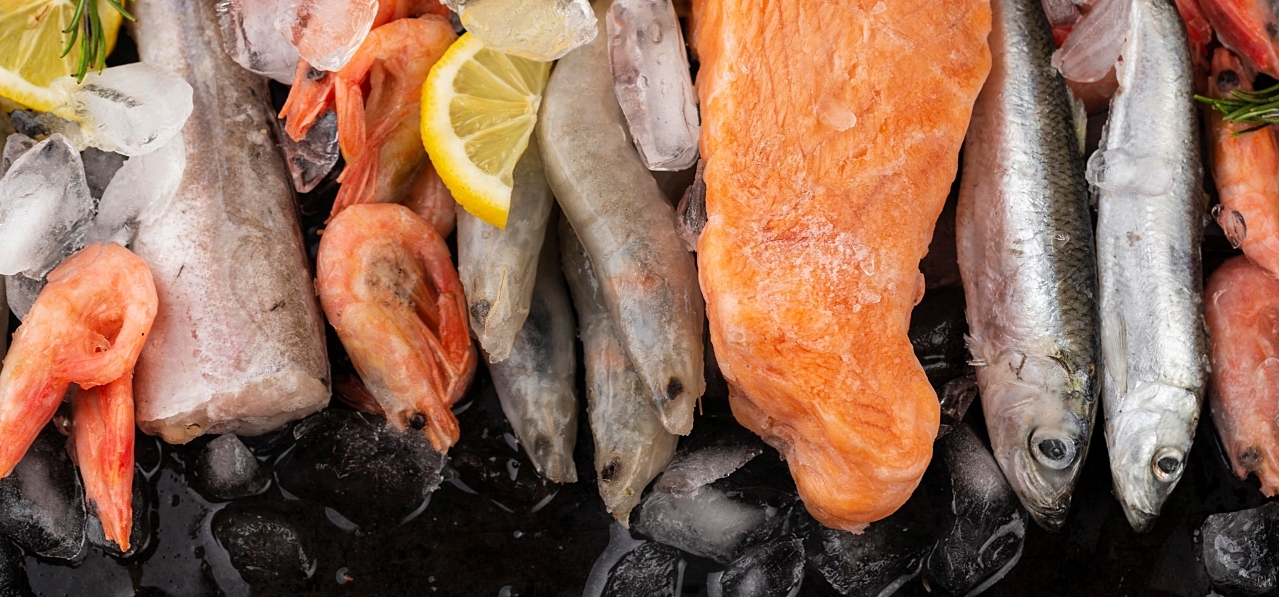

Strawberries, chops or dumplings that are a few days old are not very suitable for freezing, even if they have been stored in the fridge. In the case of pre-cooked products such as soups, sauces or chops, food that you freeze just after it has been prepared and cooled will keep best. If you want to freeze raw products such as fruit, vegetables or meats, you should do so as soon as they arrive in the kitchen. They should be washed and dried thoroughly previously.
2. Never refreeze what has been defrosted
Defrosted products are not suitable for re-freezing due to the risk of harmful bacteria developing in them. This does not apply to products that have undergone heat treatment after they have defrosted - if you roast unfrozen raw meat, you can freeze it again following the rule in point one.
3. Place pre-cooled products in the freezer..
Putting warm products into the freezer not only risks potential malfunction of the device, but also the partial defrosting of products already in the freezer, with consequent spoilage.

4. Pack products properly.
The best way to pack food for freezing is in plastic containers with a tight lid or in zipper bags. The latter have two advantages: it is relatively easy to remove excess air from them, which is bad for frozen food, and the products packed in them take up less space in the freezer and are easier to arrange.
5. Remove excess air from the packaging
Vacuum packing is undoubtedly the best solution when you want to freeze something, but it requires the right equipment, which is not always available in the kitchen. With a little patience, good results can also be achieved using bags or containers. The latter should be filled as tightly as possible with the food to be frozen (except for liquids, which will increase in volume as they are frozen. Some space should be left for these). In the case of freezer bags, the easiest way is to use zipper bags, which are much easier to remove the air from.
6. Freeze small portions of food
Portioning food before freezing has several advantages. First of all, less food will then go to waste. Individual portions can be defrosted as needed without risking that excess food taken out of the freezer ends up in the bin (because it cannot be refrozen - see point 2.). A second benefit is that smaller portions freeze much more quickly.

Freezing, unlike cooking, does not kill bacteria in food, but only inhibits their multiplication process. Therefore, defrosted products should be eaten or processed straight away (high temperatures will annihilate harmful microorganisms).
If you are preparing a large batch of frozen food, carefully describe on each package exactly what it contains and when it was put in the freezer. Then use up the oldest portions first. This will avoid the risk of spoiling food or poisoning food that seemed fit for consumption. In addition, you will avoid confusion, as some products are difficult to distinguish from one another once they have been frozen.
A malfunctioning device not only exposes us to higher electricity bills, but can also contribute to our stock spoiling. So carry out the necessary maintenance regularly and keep your freezer clean. And remember not to overload it, as this also has an adverse effect on its operation. Choose a freezer with automatic condensation evaporation for greater convenience.

Frozen food is not forever! Although this method of preserving food products significantly extends their expiry date, it also has its limitations. Below, we have prepared a summary of the storage times (in months) for the various products within the temperature range of -22 degrees to -18.1 degrees:
Finally, it is worth mentioning that freezing is quite an energy-intensive process, which is of considerable importance with today's electricity costs. For this reason, it is advisable to equip yourself with a device with good parameters. Our FAT freezer compartment is one such device, which will not only ensure optimum conditions for stored products, but will also save on electricity costs.
If you would like to find out more about the FAT freezer or other RAPA products, feel free to contact our Customer Service Department at: 81 742 53 10 or write to rapa@rapa.lublin.pl. We will be happy to tell you more about our offer!